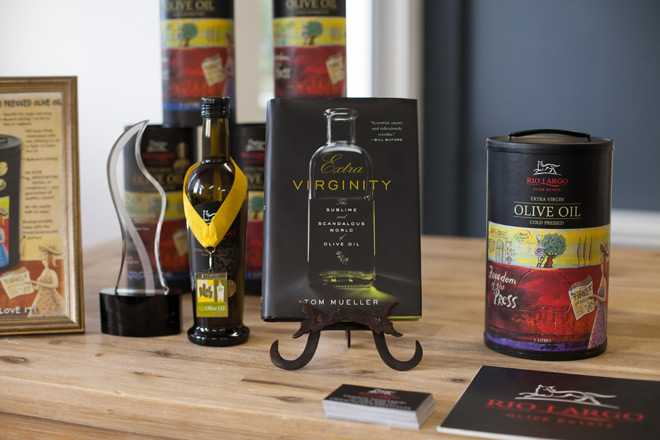How to taste olive oil

If you’re doing it like the pros then the shape of the tasting glass is point numero uno. A rounded base which cradles perfectly in the palm of your hand, warms the oil and thereby brings its taste characteristics to the foreground. The only certified olive oil tasting glass in the world, approved by the International Olive Council, is cobalt blue in order to mask your organoleptic assessment. But for us, a plastic cup will do.

1. Cut up some apple slices. Eat a slice before and during your taste test to neutralise the taste in your mouth. The sweetness and pectins in the apple also help to break down the oil barrier.

2. Pour approximately 1 tablespoon of the olive oil you are tasting into the cup or glass. Cupping the top with your other hand, give it a swirl, kind of like you do with wine, but retaining some heat. Complex olive oil aromas are now ready for your nose.

3. Notice the colour. Quality olive oils shouldn’t be too light or clear. Depending on ripening and varietals the oil can be light green, yellowish and various shades of ‘moss’.
4. Now take a whiff. You can tell a lot from the smell including defects. Bruising, for example, causes the fruit to oxidise pre-extraction which releases an alcoholic odour. Fresh cut grass and fruitiness are good things to pick up. Crayons or stale almonds, not so good.

5. Taste time. As with wine, you want to take a rather rude sounding, quick slurp. Creating an emulsion of air, drawn in through the corners of your mouth, with oil and saliva is known as strippaggio. This process also allows the aromatic molecules to travel into the nasal passage, where, through a process known as retro-nasal-olfaction, a much greater range of aromas can be perceived.

Warning: this is not for the faint hearted and the first slurp can be a little overwhelming. If you’re tasting fruitiness, slight bitterness and pungency – which is a strong peppery taste that should activate a cough reflex – you’ve got some good oleo on your hands. If you’re picking up a fusty, musty sediment or metallic, earthy or vinegary taste then toss the batch or don’t buy it again.
Some terms of endearment
Extra virgin
If you’re looking for the best in the business, this is your guy, being the highest quality grade olive oil available. Basically this grade of oil has been extracted by mechanical means only. No chemicals or heat have been used to squeeze out more liquid. To be defined as extra virgin, an olive oil must possess a detectable level of fruitiness and must contain a free fatty acidity of 0.8% or less.
Virgin
Virgin olive oil is basically refined oil mixed with a small amount of extra virgin olive oil. Refined in this case, refers to the olive oil that is produced after the extra virgin extraction process by means of heat and chemicals.

Cold pressed/First pressed
This term mainly refers to an outdated means of manufacture. Oil used to be made using a hydraulic press and the best oil was removed after the first pressing, hence ‘first pressed’. The leftover paste was then immersed in hot water and pressed again, yielding a second-press oil, but of a lesser quality. Modern day extra virgin olive oil is ‘first pressed’ as well as ‘cold pressed’ almost by definition. So using these as quality descriptive terms in conjunction with extra virgin is much of a muchness.
Pure olive oil
This refers to refined oil that has had a small amount of extra virgin added to give colour and flavour.
Light olive oil
This term refers purely to a refined olive oil. So anything that is extracted by means of heat, chemicals or deodorisation techniques.

When it comes to understanding and appreciating this highly nutritious golden liquid, we’re hard pressed not to write a novel about it, but with the above bare essentials you should be able to taste the true olio di oliva from the refined stuff.
If all this has your interest piqued, there’s always Tom Mueller’s book, Extra Virginity, and a lot to be learnt from the likes of the Olive Oil Times. Why not try this olive oil IQ test and see just how much you know?
Want some quality stuff in your pantry? Head this way for Rio Largo and some other top notch brands.
